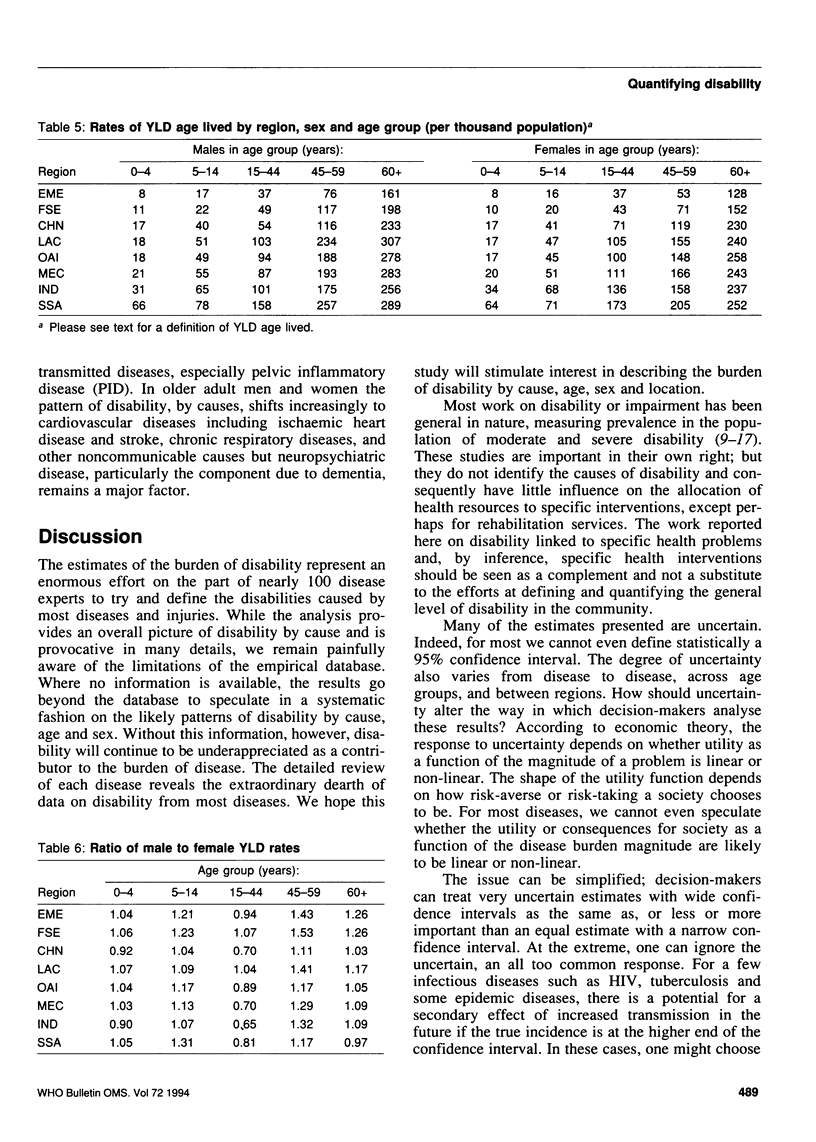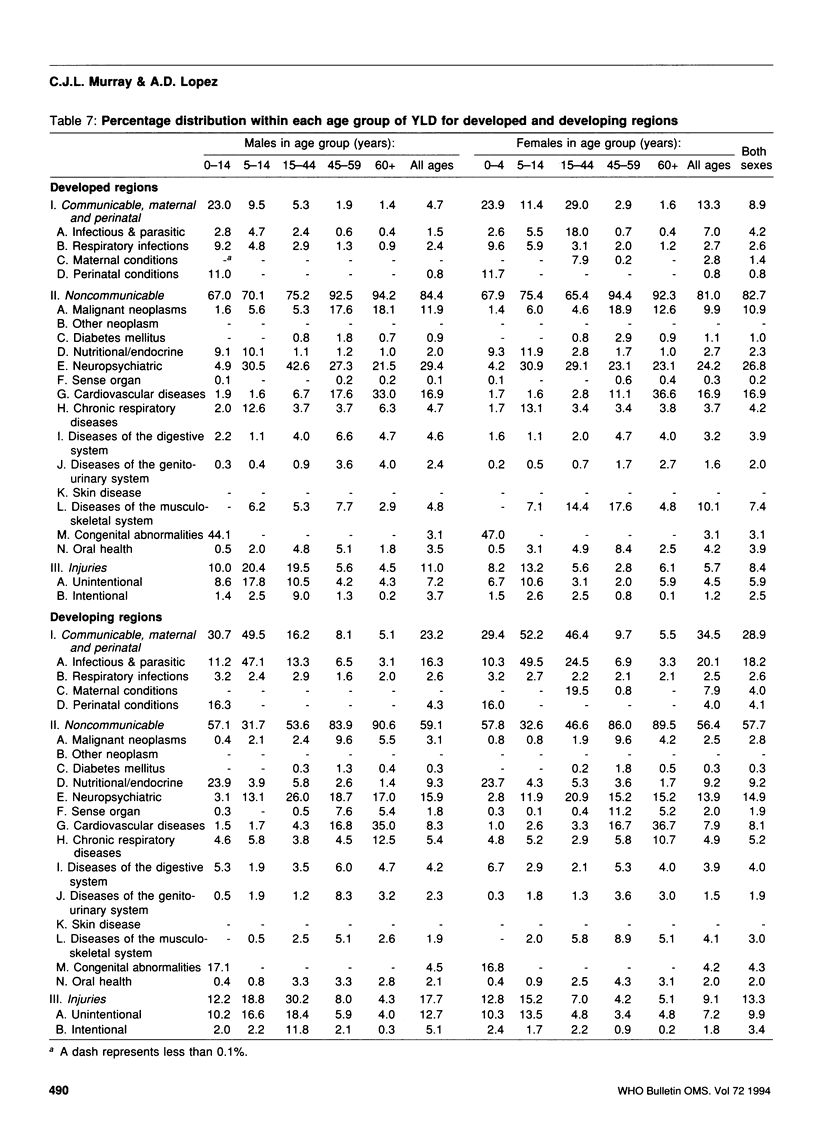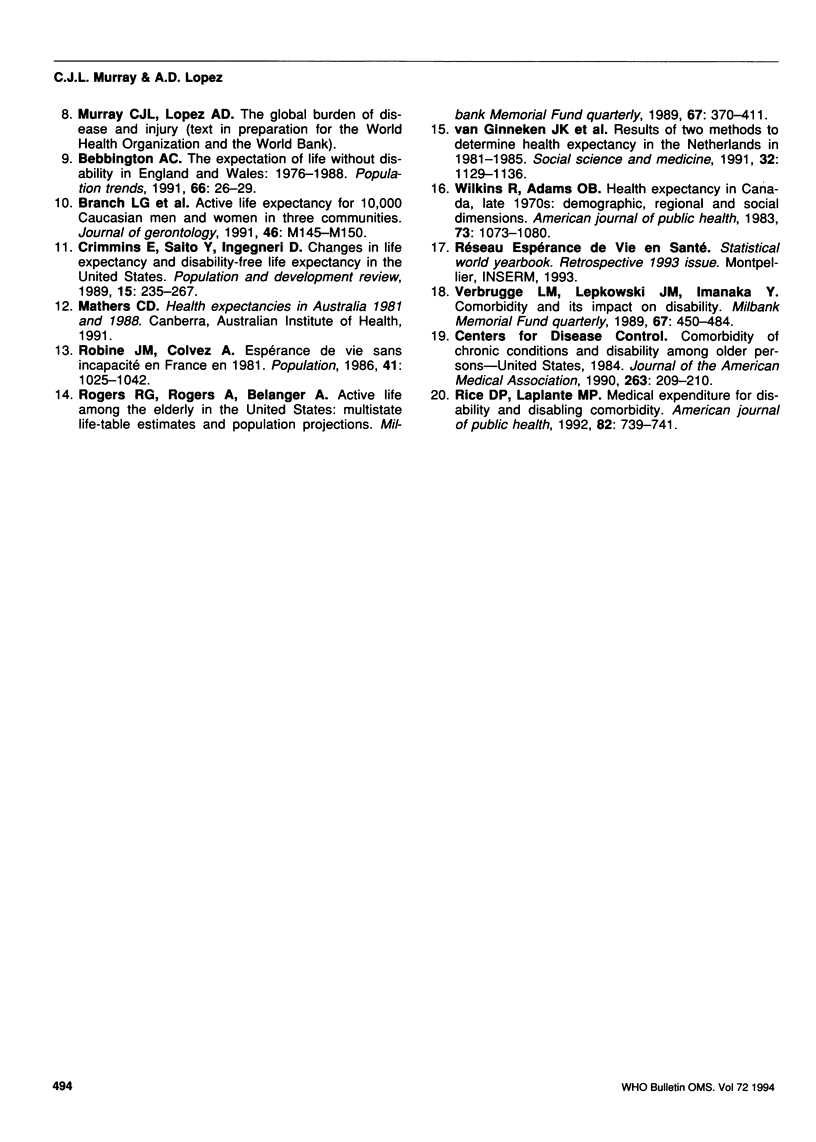Abstract
Conventional methods for collecting, analysing and disseminating data and information on disability in populations have relied on cross-sectional censuses and surveys which measure prevalence in a given period. While this may be relevant for defining the extent and demographic pattern of disabilities in a population, and thus indicating the need for rehabilitative services, prevention requires detailed information on the underlying diseases and injuries that cause disabilities. The Global Burden of Disease methodology described in this paper provides a mechanism for quantifying the health consequences of the years of life lived with disabilities by first estimating the age-sex-specific incidence rates of underlying conditions, and then mapping these to a single disability index which collectively reflects the probability of progressing to a disability, the duration of life lived with the disability, and the approximate severity of the disability in terms of activity restriction. Detailed estimates of the number of disability-adjusted life years (DALYs) lived are provided in this paper, for eight geographical regions. The results should be useful to those concerned with planning health services for the disabled and, more particularly, with determining policies to prevent the underlying conditions which give rise to serious disabling sequelae.
Full text
PDF













Selected References
These references are in PubMed. This may not be the complete list of references from this article.
- Murray C. J., Lopez A. D. Global and regional cause-of-death patterns in 1990. Bull World Health Organ. 1994;72(3):447–480. [PMC free article] [PubMed] [Google Scholar]
- Murray C. J., Lopez A. D., Jamison D. T. The global burden of disease in 1990: summary results, sensitivity analysis and future directions. Bull World Health Organ. 1994;72(3):495–509. [PMC free article] [PubMed] [Google Scholar]
- Murray C. J. Quantifying the burden of disease: the technical basis for disability-adjusted life years. Bull World Health Organ. 1994;72(3):429–445. [PMC free article] [PubMed] [Google Scholar]
- Omran A. R. The epidemiologic transition. A theory of the epidemiology of population change. Milbank Mem Fund Q. 1971 Oct;49(4):509–538. [PubMed] [Google Scholar]
- Rice D. P., LaPlante M. P. Medical expenditures for disability and disabling comorbidity. Am J Public Health. 1992 May;82(5):739–741. doi: 10.2105/ajph.82.5.739. [DOI] [PMC free article] [PubMed] [Google Scholar]
- Rogers R. G., Rogers A., Belanger A. Active life among the elderly in the United States: multistate life-table estimates and population projections. Milbank Q. 1989;67(3-4):370–411. [PubMed] [Google Scholar]
- Verbrugge L. M., Lepkowski J. M., Imanaka Y. Comorbidity and its impact on disability. Milbank Q. 1989;67(3-4):450–484. [PubMed] [Google Scholar]
- Wilkins R., Adams O. B. Health expectancy in Canada, late 1970s: demographic, regional, and social dimensions. Am J Public Health. 1983 Sep;73(9):1073–1080. doi: 10.2105/ajph.73.9.1073. [DOI] [PMC free article] [PubMed] [Google Scholar]
- van Ginneken J. K., Dissevelt A. G., van de Water H. P., van Sonsbeek J. L. Results of two methods to determine health expectancy in The Netherlands in 1981-1985. Soc Sci Med. 1991;32(10):1129–1136. doi: 10.1016/0277-9536(91)90089-u. [DOI] [PubMed] [Google Scholar]


